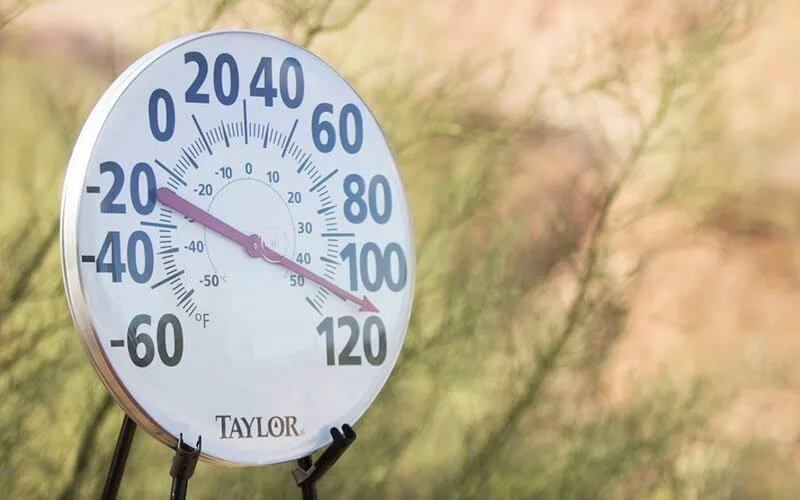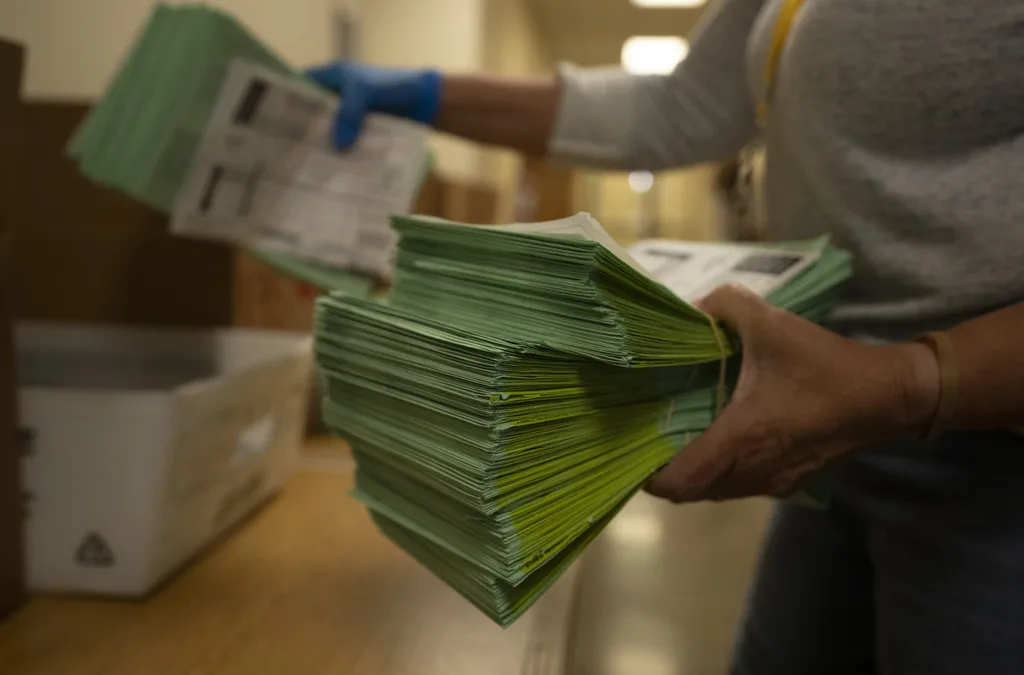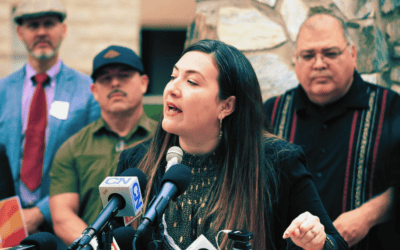
Greg Macelroy/Cronkite News
Phoenix’s nighttime temperatures have increased by 7 degrees over the last 30 years.
First, there was July.
The entire month was filled with sweltering days and 100-plus degree temperatures. It was the hottest month ever in Phoenix.
Then came August, and with it, another month of record-shattering heat.
The heat persisted with Phoenix ultimately seeing 145 days that reached or exceeded 100 degrees. They didn’t stop until Oct. 16—long after cooler temperatures usually settle in.
The heat kept on. The hottest summer ever was followed by the hottest autumn. Record highs were set again and again through the month of November.
And there’s no end in sight as another warm and dry winter approaches, leaving some to wonder if this is the new normal in a world of asphalt-covered cities and climate change.
And according to state climatologist and Arizona State University Professor Nancy Selover, “It’s getting worse.”
A Record-Breaking Year
The first part of the year saw relatively average temperatures through June.
Then July’s scorching heat hit and the anticipated monsoon season that usually brings some relief from the hot temperatures and dampens the early-summer wildfire season never hit.
“The high-pressure circulation that normally helps import moisture into the state wasn’t positioned in a place to do that very well at all,” explained National Weather Service Meteorologist Austin Jamison.
Instead, Jamison said it was positioned over far north Mexico—close enough to keep Arizona sweating, but not enough to bring moisture.
“All those factors went into this highly efficient heating of the air and it just stayed that way persistently,” he added.
READ MORE: Arizona’s Wildfires—Once Confined to a Season—May Now Be Year-round
The lackluster “non-soon” season ended up being the driest in state history, contributing to a record-breaking wildfire season that consumed more than 950,000 acres—nearly double the 520,000 acres burned in 2018 and 2019 combined.
Currently, most of the state is considered to be in extreme or exceptional drought conditions.
The National Oceanic and Atmospheric Administration predicts conditions won’t improve before the end of February.
Hot—and Getting Hotter
Arizona is seeing more hot days with each passing year, according to Jamison.
The average temperatures have gradually crept up across the state over the past decades. The average annual temperature increased from 2.5 degrees over the past 30 years.
It’s not clear how much of that increase is attributable to the natural warming of the planet compared to the emission of greenhouse gases, Selover noted.
Cities in every corner of the state saw that 2.5-degree increase.
But Selover said Phoenix was hit the hardest in the nighttime, where temperatures have increased by 7 degrees since the 1990s. That can likely be attributed to the urban heat island of downtown Phoenix as the surrounding heavily-paved city grew. The asphalt absorbs the sunlight during the day and continues to radiate heat throughout the night, making it difficult to ever fully cool, retaining the heat in the pavement where it persistsinto the new day.
In Phoenix, these extreme temperatures are becoming more commonplace. Three out of the four hottest years to date all occurred within the last decade—2020, 2017, and 2014. The fourth was in 1989.
The human body isn’t suited into living in these conditions, and, without the right resources, it can have deadly consequences. Heat is the top weather-related killer in the state and even more so in 2020 with 207 heat-associated deaths through October. Another 134 remain under investigation, This is higher than the 197 reported in all of 2019 and 182 in 2018.
Even desert plants, which are literally conditioned to thrive in the heat with little water, were impacted this year. Selover said arborists reported some Arizona saguaros died off as the soil was too hot for their roots, placing additional stress on the native plant that only grows in the Sonoran Desert.
The trend will likely continue. The NOAA forecasted a La Niña weather pattern this winter, meaning the Southwest will again see warmer, drier conditions.
And—thanks to climate change sped up by man-made emissions—Arizona is on track to only get hotter in the coming years.
Forecasting models show conditions worsening with more extreme drought, high heat, and sporadic monsoons.
“It’s something we’re going to have to deal with,” Selover said. “Anything you can do that’s going to change the climate on a larger scale isn’t going to happen on a timeframe that’s going to make you comfortable… You’re going to have to find a way to adapt in the short term.

He said what? 10 things to know about RFK Jr.
The Kennedy family has long been considered “Democratic royalty.” But Robert F. Kennedy, Jr.—son of Robert F. Kennedy, who was assassinated while...

Here’s everything you need to know about this month’s Mercury retrograde
Does everything in your life feel a little more chaotic than usual? Or do you feel like misunderstandings are cropping up more frequently than they...

Arizona expects to be back at the center of election attacks. Its officials are going on offense
Republican Richer and Democrat Fontes are taking more aggressive steps than ever to rebuild trust with voters, knock down disinformation, and...

George Santos’ former treasurer running attack ads in Arizona with Dem-sounding PAC name
An unregistered, Republican-run political action committee from Texas with a deceptively Democratic name and ties to disgraced US Rep. George Santos...




